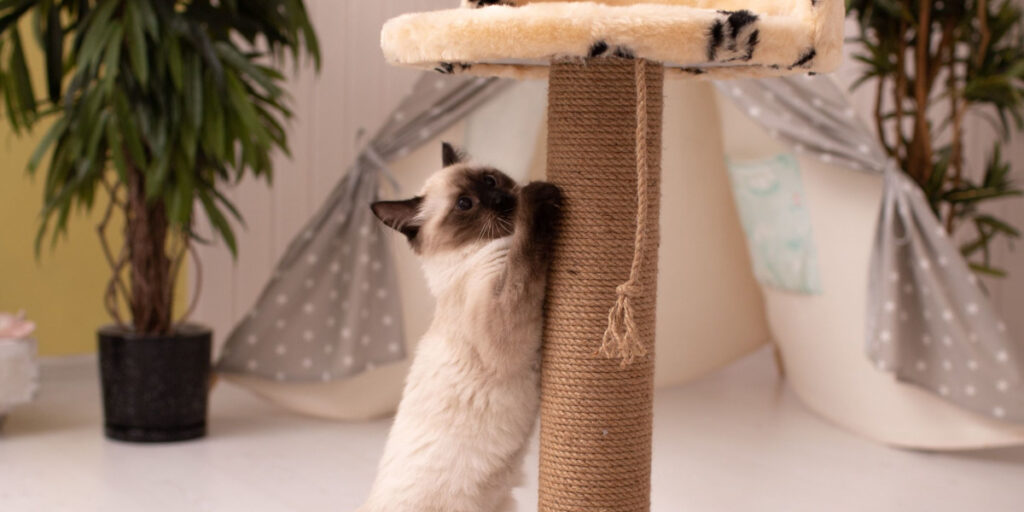Whether you’ve got a tiny little kitten or a fully grown senior feline, you’ve likely seen some version of scratching behavior in your cat. But the degree to which your cat scratches—and what they scratch—is different from one cat to the next.
Scratching is a normal, healthy behavior for cats to engage in. However, it can be troublesome if your cat is tearing up your furniture and belongings.
We’ll cover the basics of cat scratching behaviors and how to discourage problematic scratching in your cat.
Why Do Cats Scratch?
At the most basic level, scratching is a cat’s way of shortening and conditioning their claws. It’s similar to humans clipping their nails; scratching wears down the sharper, longer points of your cat’s claws so they’re more comfortable walking.
However, scratching also allows your cat to mark their territory, both visibly in the scratch marks and with the scent of their foot pads. If your cat is anxious or involved in conflict, such as if you get a new pet, their scratching and other marking behaviors may increase.
How Do I Stop My Cat From Scratching?
If your cat’s scratching behavior is problematic for you, it’s natural to want to do everything you can to stop the behavior.
While you can’t expect your cat to stop scratching entirely, you can redirect their scratching to approved items, such as scratching posts. Not providing appropriate scratching outlets for your cat will increase the likelihood they will scratch your furniture, so it’s important to ensure your cat has something that you’re OK with them scratching.
For many cats, providing just one scratching post or other scratchable item, such as a cardboard scratcher, can work to direct the scratching behavior appropriately. Some cats, however, may need more appropriate scratching outlets.
When you do see your cat scratching something they’re not supposed to, carefully moving them to an item that’s approved to scratch on is helpful toward redirecting the behavior. Don’t yell at them, but move the approved item next to your cat and redirect them to scratch on it. Once they do scratch on the approved item, praise them and pet them gently to reinforce the good behavior.
Additionally, taking time daily to play with your cat, and always making sure they’ve got toys available to play with, can help curb scratching behavior that arises from boredom.
What if My Cat Still Scratches?
If you’ve provided ample toys and scratching items to your cat, worked on redirecting the behavior, and you engage in play with your cat but they still scratch your furniture, it may be worth talking to your vet.
Some cats can scratch out of anxiety, and your vet may be able to help you find methods to control your cat’s anxiety and curtail the scratching.
If your cat still insists on scratching your furniture, you can make them less desirable to scratch by covering them with a blanket, a sheet of plastic, or double-sided tape. You may also consider covering your cat’s claws with plastic claw covers to limit the amount of damage they inflict when scratching, especially if you’re still early in the process of redirecting their behavior.
Veterinarian for Cats in Frederick, MD
At Old Farm Veterinary Hospital, we know how frustrating it can be if your cat scratches the furniture. Our experienced team can work with you to come up with a way to redirect your cat—and look for underlying reasons for the scratching, if necessary—during your pet’s annual wellness exam. Schedule your appointment today!



